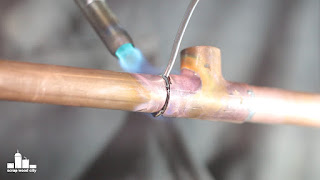Tools and materials I propose:
I created my snowman out of a scrap piece, I found in the garbage. I think it was part of an old door.
First of all I created a circle at one end of the stock. Then I made a smaller circle on the other end.
I used my vise and a screw clamp to secure the stock on my bench.
I wanted to create a cone, so I started shaping with my draw knife. The circles on the ends were my limits. So I tried to remove material, without losing the circles.
After the draw knife, I moved on to the plane. The plane smoothed everything out!
Next I divided the cone to my basic snowman shapes. I also divided the hemispheres of the snowman.
Next I added a piece of tape as a depth mark on my saw.
And I created my stop cuts. I stared carving with a gouge. When I finished the first wave of carving, I decided I wanted my shapes to be more dramatic. So I made another series of stop cuts and continued to carve.
My gouge was pretty good quality, so I sharpened it only once for this project.
The next step was to use a file to clean the gouge marks. After the file I used 100grit sandpaper to clean the file marks. I did not get crazy here. I wanted the project to look beat up and hand made.
Next I used a center punch to create my drilling marks. I used my ancient hand powered drill to make my holes.
The nose of my snowman is just a 6mm dowel glued in place.
To make the hands, I used my spokeshave to round over a piece of square stock. Next I made a few stop cuts, and used a chisel to shape the gloves of the snowman.
I used the chisel again to flatten the area of the snowman that would receive the arms. The arms are connected to the body with wood glue and a 6mm dowel.
At this point I started the paint job. First I applied a coat of white latex paint.
The paint raised the grain of the wood, so I lightly sanded with 220 grit.
Next I painted the hat and the gloves with blue. The nose was painted orange as a carrot.
To create the rustic effect I sanded the white areas with 100grit, until the grain of the wood started to show up.
On the blue and orange areas, I sanded until the white paint underneath started to show up. I also like to reveal the high spots, like the edges of the hat!
I finished the piece with two coats of clear, water based, satin varnish.
And I was done. Some people don’t like the rustic projects, I love them. I think they have a lot of character and personality.
I am really happy with my little snowman, I hope you like him too.
But that was it, have all a Merry Christmas. See you soon, with a new project video!
Disclosure: Some of the links below are affiliate links, meaning, that at no cost to you, I get a small commission if you click through and make a purchase.
































